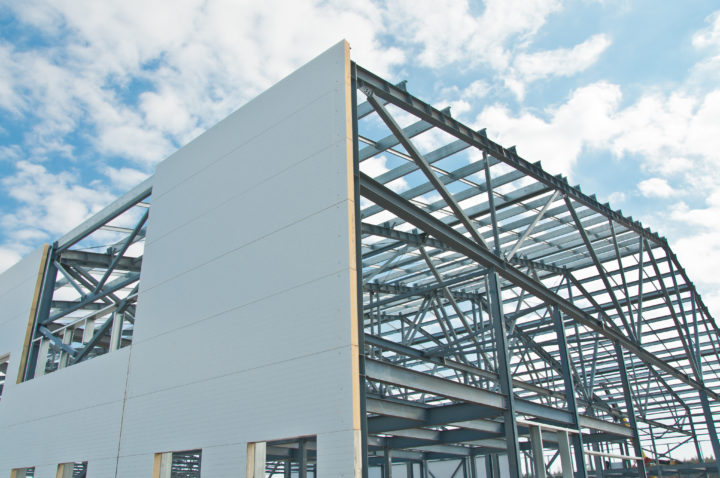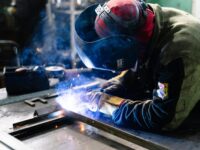The following contribution is from another author.
Futureproof buildings have been one of the considerations lately in the world of construction. With the diverse advancements in building materials and construction, new products have become available in the market. Many of these are believed to make buildings more sustainable than ever. To transport the materials at the construction site and for other purposes, you also need track loaders for your projects.
If you’re planning to build a structure anytime soon, you may be considering knowing the most feasible and most renewable building materials. That way, you could start looking into each material’s strengths and weaknesses. For that purpose, here’s an article to guide you. Steel
Steel is one of the most preferred options as a building material for a whole host of steel building types because of its durability and versatility. This material generally withstands the test of time as they’re resistant to temperature changes, heat exposure, and wind.
In many cases, the use of steel building kits has been one of the common ways to erect and construct a steel structure. This is the go-to option for anyone who desires a dependable garage, greenhouse, and residential properties. Apart from these, steel materials are easy to clean and maintain. They may only need an anti-rust coating to keep the rust-prone components free from corrosion.
Their installation could be challenging because of their weight, but it’s something doable because of the availability of professional services that could get the job done. With enough training and knowledge, DIYers could even erect their own barndominium, or metal building of their choice, after careful planning and structuring.
Precast Concrete Slab
Concrete is versatile material used in almost all new buildings. It’s also widely available from suppliers like imi, meaning it tends to be affordable and easy to get hold of. One of the easiest and quickest ways to use concrete is to use precast concrete slabs. Every needed material is simply attached, joined, and locked before a concrete structure is erected. Generally, they’re pre-made on a manufacturer’s site. Apart from these advantages, precast concrete slabs are weatherproof and resistant to damages brought by extreme temperatures. Because of this, they typically have a longer lifespan than traditional building materials.
Engineered Timber
Engineered timber is also easy to apply as it’s one of the materials that are flexible to design, enabling you to incorporate it into other building materials. However, it has low resistance to heat and water damages. Depending on its core material and strength, it tends to be weaker than concrete and metal types, yet it’s generally cheaper than the others.
Bamboo
Bamboos are highly sustainable because of their rapid growth. Thus, replacement isn’t a problem for building with bamboo as walls, floors, doors, and exterior parts. Many eco-friendly homes today have installed bamboos to improve the overall property climate. In addition, this material is easy to install and could be flexible to any interior design. Because of its weight, many builders prefer it to be used as supplementary building materials rather than core components.
Wool
While used mainly for insulation purposes, wool building materials could also be walling and siding materials. Some interior designs even use wool to stylize homes and commercial spaces. Yet, it may require more maintenance than wood and concrete because of its need for treatment to remain intact and insect-free.
Recycled Plastic
Because plastic waste is the most common non-biodegradable material today, many material developers have experimented with plastics as a building material. Nowadays, processed plastics are used as wall linings and fillings. They’re also used as ceiling and roof panels. However, recycled plastics may require rigorous processing and treatment to be strong enough against potential damages.
Rammed Earth
This material may be a solo or combined lime, chalk, clay, and compacting material. This has been popular since ancient eras but remains to be efficient even until this day. Typically, earth materials are molded with the help of wooden, steel, or concrete rebars and forms to have their desired shape and thickness.
Filling them with gravel and blending them with other building materials also improve their strength and resistance. But they have low water resistance, especially when soaked for a long time.
Hempcrete
This is a smart combo of hemp fibers and concrete. Since hemp grows fast, hempcrete is considered as one renewable resource. In addition, this product is known to be durable and lightweight, making it easy to install. It also reduces heat and regulates room climate better. But since it’s a new technology, it may have a limited supply right now.
Ferrock
Generally, ferrock building materials are made from processed steel dust or ferrous rock. Ferrick materials are typically more robust and could be erected in areas soaked in saltwater. Because of this, many builders use this material in their marine structures. Because ferrock is made from recycled dust and rock, it could be identified as a legit renewable material source.
Wrapping Up
Sustainability is one of the qualities that building materials should characterize. Luckily, there are a lot of materials developed from waste and other renewable resources. Apart from sustainability, most, if not all of them, are known for their resistance to temperature changes, physical damages, and natural wear and tear. Suppose you’re looking for the best building material for roofing, walls, and floors. In that case, you may just hover over the diverse options in this article and pick a sustainable material that’ll suit your specific needs.

















It is important to have high-quality content to attract people to visit the website and that is exactly what this website has to offer. My website:
To draw visitors to a website, it is crucial to have high-quality material, and this website offers just that. my webpage